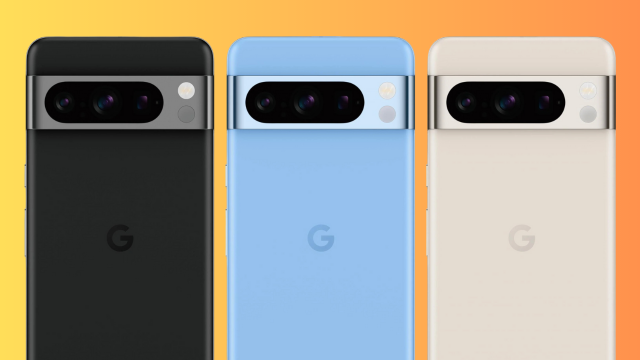We’ve just been through Google Pixel release season, with the tech giant unvielling the all-new Pixel 8 series, so it’s a pretty good time to give Pixel users a few tips on getting the most out of their handset, with a focus on charging and preserving battery life?
We’ve mentioned before that charging a Google Pixel phone with just any old cable isn’t the best idea, and provided some tips on adaptive battery, but here’s a Google-approved list of everything charging-related that’ll improve your Pixel’s life.
8 charging tips for Google Pixel users
Cable matters
1. All Google Pixel phones can charge with USB-C cables, but for best results, you can’t go past the power adapter that comes with the phone. A double-ended USB-C cable into a power adaptor that plugs into the wall is the quickest, and safest, way to charge.
2. You can charge your Google Pixel with a USB-A power adapter, using a USB-C to USB-A cable, but this dramatically increases your charge time over a USB-C. Similarly, if you’re using a laptop or other device to charge your phone, expect it to take a while.
You don’t always need a cable
3. The back of your phone is actually a charger. You can use Battery Share to wirelessly charge Qi-certified phones or accessories, like Pixel Buds, Pixel Watch, or another Pixel (compatible phones are the Google Pixel 8, Pixel 8 Pro, Pixel 7, Pixel 7 Pro, Pixel 6 Pro, Pixel 6, or Pixel 5). To charge, you simply place the other device on the back of your phone. To charge wirelessly with Battery Share, your phone needs to have a high enough battery level. To check your battery level, go to Settings, tap Battery, Battery Share.
Extend battery life
4. To extend your Google Pixel’s battery life, you can fiddle with your screen display. Reduce your screen’s brightness (swipe down with two fingers from the top of your screen, move the slider left), turn on dark theme (Settings, tap Display, Dark theme, turn on Dark theme), turn off live wallpapers, turn off your screen when you’re not using it (Settings, tap Display, Lock screen, turn off Always show time and info), let your screen turn off sooner (Settings, tap Display, Screen timeout, then pick a time, such as 30 seconds), turn off Smooth Display (Settings, tap Display, Smooth Display, turn off Smooth Display), and have screen brightness change automatically (Settings, tap Display, Adaptive brightness, turn on Adaptive brightness. You can also head to Settings, tap Sound & vibration, turn a sound or vibration on or off.
There’s always battery saver
5. Obviously charging your phone sooner rather than later would be ideal, but the Google Pixel has a few fallback options. If your battery is about to die, turn on Battery Saver. You can also try Extreme Battery Saver (swipe down from the top of your screen, tap Battery Saver – you can also schedule this). Lay off the videos, games, GPS, and don’t use the camera, but also limit your phone calls to when you’re stationary (finding a tower when you’re driving, for example, drains the battery). Turn on Airplane mode, turn off Bluetooth, and turn off Location. If you’re using Extreme Battery Saver, you can choose apps to stay active by going to Settings, tap Battery, Battery Saver, Extreme Battery Saver, Essential apps, and restrict apps with high battery usage.
6. To reduce background battery drain, restrict apps with high battery usage. Go Settings, tap Apps, App battery usage to identify any high-use apps. You can also turn off high-drain features, like hotspot and Wi-Fi.
7. Delete any unused accounts. Having fewer accounts on a phone can save battery. The phone’s owner can delete accounts and user profiles. This also goes for unused apps – delete them to get more battery life out of your Google Pixel.
It’s getting hot in here
8. Letting your Google Pixel get too hot while charging can cause damage. To avoid this, don’t play video, games, or other media; make video calls, record videos in high-definition; connect to a Wi-Fi hotspot, or tether your phone or use it as a Wi-Fi hotspot; or download or upload a lot of data over a mobile data or Wi-Fi connection while your Google Pixel is charging.
Image: Gizmodo Australia
While you’re here, why not check out our daily tech deals, our guide to the best value for money NBN plans, and info on the latest phones from Apple, Google, and Samsung. Head to our dedicated Mobile tab for more.
This article has been updated since it was originally published.
